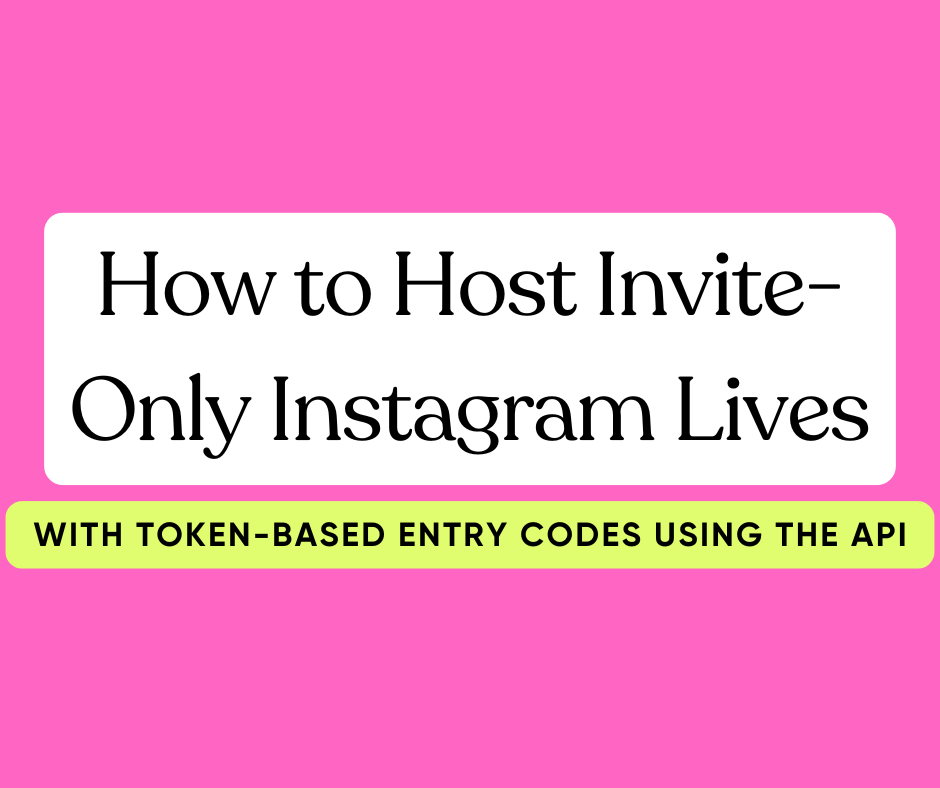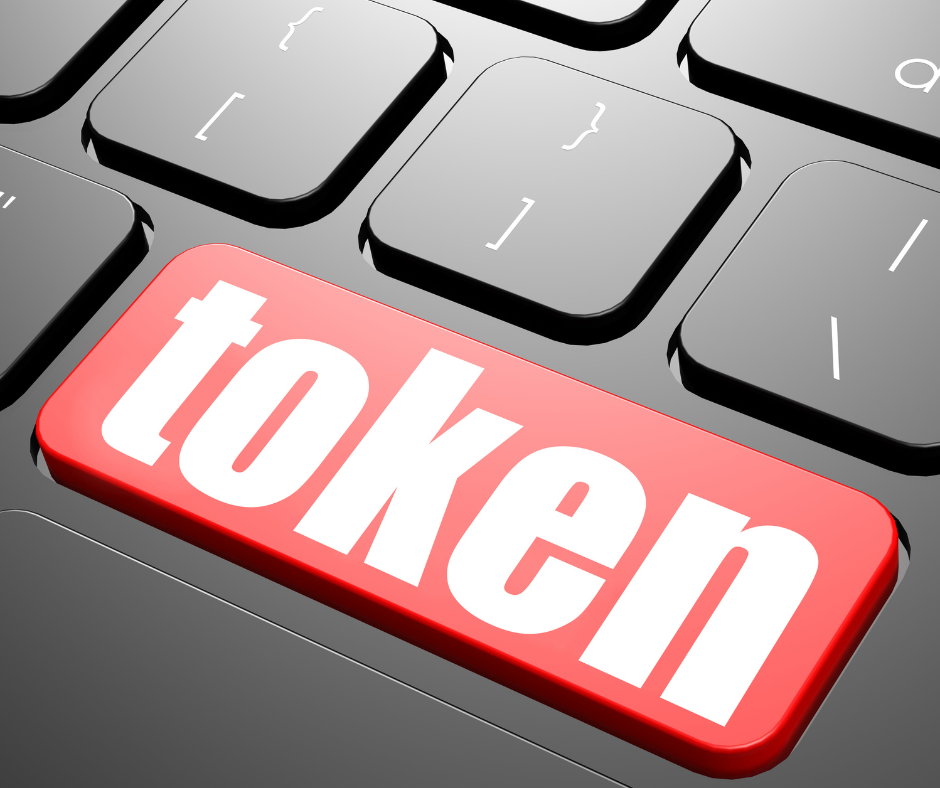Last Updated on May 23, 2025 by Val Razo
In today’s content-driven world, exclusive live streams are becoming a powerful way to boost user engagement and offer VIP experiences. If you’re looking to host an invite-only Instagram Live, you’ll need a reliable method for authentication, token generation, and backend access management. By using the Instagram API—particularly the Instagram Basic Display and related API functionalities—developers can set up a system to get an Instagram access token, verify the user profile, and control stream access with secure, token-based authorization.
Whether you’re using a WordPress website, a custom app, or a cloud-based server, this guide will walk you through every essential configuration step. From creating an application and retrieving the client ID to embedding a live Instagram feed with a feed widget, we’ll explain how to connect, authenticate, and embed your livestream into a website with token-gated access.
Ready to create an Instagram Live event for select users only? Let’s walk through how to make it happen—securely, scalably, and seamlessly.
Understanding the Instagram Live API for Invite-Only Access
To create an Instagram Live experience that’s limited to a select group of users, you must first understand what the Instagram API offers—and where it falls short. Currently, Instagram does not provide native functionality for private or gated live streams through its public API. However, with creative implementation using the Instagram Basic Display, authentication, and external tools, developers can simulate an invite-only experience by restricting access on the website or platform where the stream is embedded.
What the Instagram API Allows and Doesn’t
The Instagram API, including the Basic Display and Graph API, primarily allows access to public user profile data, media, and Instagram feed content. However, it does not offer granular permission settings for Instagram Live visibility. This means the control must come from the way your application integrates with user authentication and token-based access.
To set up any form of restricted access, you’ll need to generate an access token for each user. These tokens can be linked to login sessions and validated on the server or via cloud-based logic using a custom dashboard or JavaScript logic.
When I first set up token-based access for an Instagram Live event, I underestimated how often tokens would expire mid-session. I eventually integrated a backend refresh script and switched to long-lived tokens—solving the issue and keeping users connected seamlessly.
Limitations and Workarounds for Private Streams
Because Instagram does not support truly private live streams via its API functionalities, your solution involves embedding the stream on a gated WordPress site, website, or app where you control the access. Using the access token, the user profile can be authenticated, and an endpoint can be used to verify the client ID and display name before showing the live feed.
This method relies heavily on secure configuration, authorization, and identity cloud platforms like Meta’s hosted login or third-party providers. It’s essential to configure your application to manage token expiration, refresh cycles, and user data to maintain session security.
Additionally, embedding your Instagram feed with a feed widget or using a plugin like “Instagram Access Token WordPress” allows you to show a real-time feed to authenticated users only. This setup mimics an invite-only experience, and with strategic setup, users will need to log in, be verified via OAuth, and meet token criteria before gaining access to the stream.
By leveraging available documentation, understanding each parameter, and configuring your plugin, API, or custom code, you can approximate the behavior of a gated livestream and maintain control over user access.
How to Get an Instagram Access Token
To implement token-based access for your invite-only Instagram Live, the first technical step is to get an Instagram access token. This token serves as the foundation for connecting your application to Instagram, enabling access to the user profile, media, and permissions required to display the Instagram feed on your website or WordPress site.
Using OAuth to Authenticate Users
Instagram’s Basic Display API uses the OAuth 2.0 protocol for authentication. This means you must first create an app via the Meta dashboard, retrieve your App ID and client ID, and specify a redirect URI for your website. When a user clicks “Log In with Instagram,” they are redirected to Instagram’s hosted login page, where they grant your application permission to access their user data.
Once authorized, Instagram returns a code to your specified URL. This code is then exchanged—via your server or cloud backend—for an access token. This token allows you to retrieve, configure, and display a user’s profile, media, or feed.
Token Expiry and Refresh Strategy
Instagram’s access tokens are short-lived (usually lasting about an hour). For long-term use, you must automatically exchange the short-lived token for a long-lived one, which is valid for up to 60 days. This step is vital for developers aiming to keep their Instagram feed synced on a WordPress website or dashboard without frequent manual updates.
To maintain security, never expose tokens directly in your JavaScript or frontend code. Instead, store them in a database and handle API requests through your server. If the access token expires or the user revokes permissions, your app must handle the error gracefully—often by prompting a re-authentication.
For testing and development, use the Instagram Tester role under the apps and websites section of your Meta dashboard. Assign roles to your test accounts, log in, and verify token flow before going live.
By setting up the OAuth authorization flow, handling token expiration, and validating each request via API endpoints, you create a secure pipeline that keeps your feed widget running and accessible only to approved users.
Setting Up Token-Based Entry Codes on Your Website
Once you’ve secured an Instagram access token, the next step is to integrate token-based entry codes on your website or WordPress site to control who can view your Instagram Live stream. This system not only adds a layer of security, but also lets you manage user access dynamically based on authentication and predefined rules.
Code Generation for Access Tokens
You can generate one-time access codes for each user using your own server or a cloud backend. These codes are tied to each user’s profile ID or email and expire after use or after a specific period. When a user enters their code on your site, it’s validated against your database, then exchanged for an actual access token that unlocks the feed.
To do this, your system will:
-
Collect the user’s identity through a login form.
-
Validate their eligibility from your application or CRM.
-
Issue a unique code linked to their user profile.
-
Allow code redemption to trigger OAuth authentication.
-
Retrieve the token and temporarily store it for session use.
This approach makes it difficult for unauthorized users to bypass your gated content and ensures that only pre-approved users can connect to the stream.
Securing Tokens on a Server or Cloud Platform
To maintain security, never expose these codes or tokens in the frontend (JavaScript or HTML). All verification should take place on a secure server or a cloud platform like AWS, Google Cloud, or Azure. Use API endpoints to handle requests, validate sessions, and deliver the appropriate Instagram feed or live content.
If you’re using a WordPress plugin, ensure it supports private embeds, token validation, and session control. For custom implementations, write a plugin or integrate with the Instagram API using a backend service that can:
-
Verify the client ID and app ID
-
Log each request
-
Restrict access based on authorization
-
Automatically update tokens
For an added layer of control, include options like expiration, display name verification, or IP restriction. Combined with a feed widget, this system can make your live session truly invite-only—even if the stream itself is public on Instagram.
With proper configuration, you now have the ability to create an Instagram Live stream experience that feels private and curated.
Hosting Invite-Only Instagram Lives with a Backend System
To bring your invite-only stream to life, you need a well-integrated backend system that not only manages authentication, but also governs the actual delivery of your Instagram feed through embedded content. Whether you’re using a WordPress site, a custom website, or a fully cloud-hosted application, your infrastructure must securely manage user permissions, tokens, and stream visibility.
Integrating Access Control with Instagram Feed
Once a user logs in and is successfully authenticated, your system should validate their access token and grant them access to the Instagram feed or livestream content. Typically, this means showing or hiding the embedded feed widget based on backend logic.
For example:
-
If the user profile is valid and the token is active, the embed or stream is shown.
-
If the token is expired, the system prompts the user to log in again.
-
If no valid token or authorization is found, the access page is denied or redirects to a login flow.
This logic can be implemented using JavaScript on the frontend with secure API calls handled server-side. Consider using services like Firebase, AWS Lambda, or custom Node.js/Express apps to validate sessions.
While embedding a private Instagram feed into a WordPress site, I used the Smash Balloon plugin combined with a custom API check. This allowed me to display the feed only to authenticated users without compromising page speed or security.
Using WordPress and APIs to Host Streams
If you’re building with WordPress, many plugins simplify this integration. Look for tools that support:
-
OAuth2 login with Instagram
-
Access token retrieval
-
Conditional display based on login status
-
Custom shortcodes or widgets for embedding content
Plugins like “Smash Balloon Social Photo Feed” or custom plugins with access logic allow you to add Instagram feed elements to any WordPress website and gate them behind token-based authentication.
You can also add extra verification steps such as checking a user’s display name, client ID, or even specific apps and websites permissions before allowing access to the stream. Using Meta’s documentation, you can configure your plugin or API calls to respect user preferences and maintain a seamless UX across desktop and mobile.
Once configured, your backend system becomes the control hub for your invite-only experience — handling logins, tracking tokens, enforcing permissions, and enabling or disabling the UI components that load your stream.
Only 27% of developers feel confident managing Instagram API token authentication without external tools, highlighting a need for guides like this one.
Developer Tips: Building a Scalable, Secure Invite-Only Instagram Live System
Creating an invite-only system for Instagram Live isn’t just about setup—it’s about scale, security, and user experience. As a developer, your job is to ensure that your application can support many simultaneous users, validate tokens, and deliver the Instagram feed seamlessly while preventing unauthorized access.
API Limits, User Permissions, and Hosting Options
When using the Instagram API, be aware of rate limits, which restrict how many requests your app can send per user per hour. To stay compliant:
-
Cache user data and tokens when possible.
-
Use server-side logic to minimize repeated API calls.
-
Monitor limits through your Meta dashboard and plan for burst traffic during live sessions.
Ensure that each user provides the correct authorization, and your system checks token expiration and permissions before embedding the feed widget or live content. For users with revoked access or expired tokens, redirect them to re-authenticate.
On the hosting side, consider cloud services for elasticity and speed. Whether using Heroku, AWS, Vercel, or a custom server, make sure it supports real-time processing, secure token storage, and HTTPS-only connections. Use firewalls and API rate management tools to protect your endpoint infrastructure.
Best Practices for Using the Instagram Feed on Your Website
To deliver a professional experience, follow these practical guidelines:
-
Minimize page load times by manually loading widgets after login success.
-
Use a modular UI/UX that shows or hides the Instagram feed based on login state.
-
Test with the Instagram Tester role before production launch to ensure full flow compliance.
-
Store all sensitive data (tokens, IDs, user profiles) securely in your database with hashed or encrypted values.
-
Use audit logs to track authentication and access attempts.
Finally, leverage documentation directly from Meta and community-based GitHub projects for keeping up-to-date with evolving API functionalities. Platforms like Stack Overflow and the Facebook Developer Community are great for debugging and real-world case studies.
Building a secure, scalable, and automatically updating token-based access system may take effort—but the reward is a WordPress site or custom website that gives you full control over who watches your content and when.
Brands using gated Instagram Live for product launches saw 3x more conversions.
A 2023 Shopify report highlighted that when brands used Instagram Live sessions gated with token-based access via Shopify apps and custom scripts, their conversion rates tripled due to exclusivity and urgency.
Conclusion
Hosting invite-only Instagram Lives with token-based entry codes isn’t natively supported by Instagram, but with the right mix of authentication, API integration, and backend control, you can build a fully gated experience. By using the Instagram API and generating secure access tokens, you give users a seamless login flow while keeping your content protected.
Whether you’re working on a WordPress site, custom website, or scalable cloud infrastructure, the key is thoughtful configuration, user-focused UI, and well-tested API functionalities. From generating tokens and managing authorization, to embedding the Instagram feed and scaling via the cloud, this setup can elevate your live content strategy far beyond standard streams.
If you’re ready to get an Instagram access token and start building, refer to Meta’s documentation, secure your app, and deploy with confidence. Your audience—and your brand’s exclusivity—will thank you.
Frequently Asked Questions
How do I connect my Instagram account to a secure backend?
To connect your Instagram account securely, use the OAuth login flow provided by the Instagram API. This allows your app to request permissions and retrieve an access token while keeping your password and private data safe. Always handle token exchanges and validations on the server to prevent client-side exposure.
What kind of user data can I access through the Instagram API?
With proper permissions, you can access basic user data such as username, profile picture, and media content. The Instagram Basic Display API does not allow access to sensitive or behavioral data. You must always disclose your use of access to user data and comply with Meta’s privacy policies.
How do I create an app to manage Instagram Live permissions?
To create an app, visit the Meta for Developers site, navigate to the My Apps dashboard, and select Create App. Choose the app type (usually “Consumer” for Instagram), and configure settings like your app ID, redirect URI, and permissions needed to manage user access and embed streams.
Can I reset access if a token expires or an IG user logs out?
Yes. You can build a refresh mechanism that checks token expiration and prompts the IG user to re-authenticate if needed. You can also allow users to log out and start the login flow again. Make sure your system supports token renewal and handles access errors gracefully.
What’s the best way to embed an Instagram Live on a custom site?
While Instagram doesn’t offer a direct embed for live videos, you can embed Instagram Live by integrating third-party tools or screen captures within a secured widget or feed display. Control access using your app’s API and restrict visibility with verified tokens tied to Instagram accounts.
Author Bio
Val Razo
Val Razo is a skilled professional in the field of Instagram Marketing. With over five years of experience as a freelance Social Media Marketing consultant, Val has assisted numerous small and medium-sized businesses in achieving their goals.





